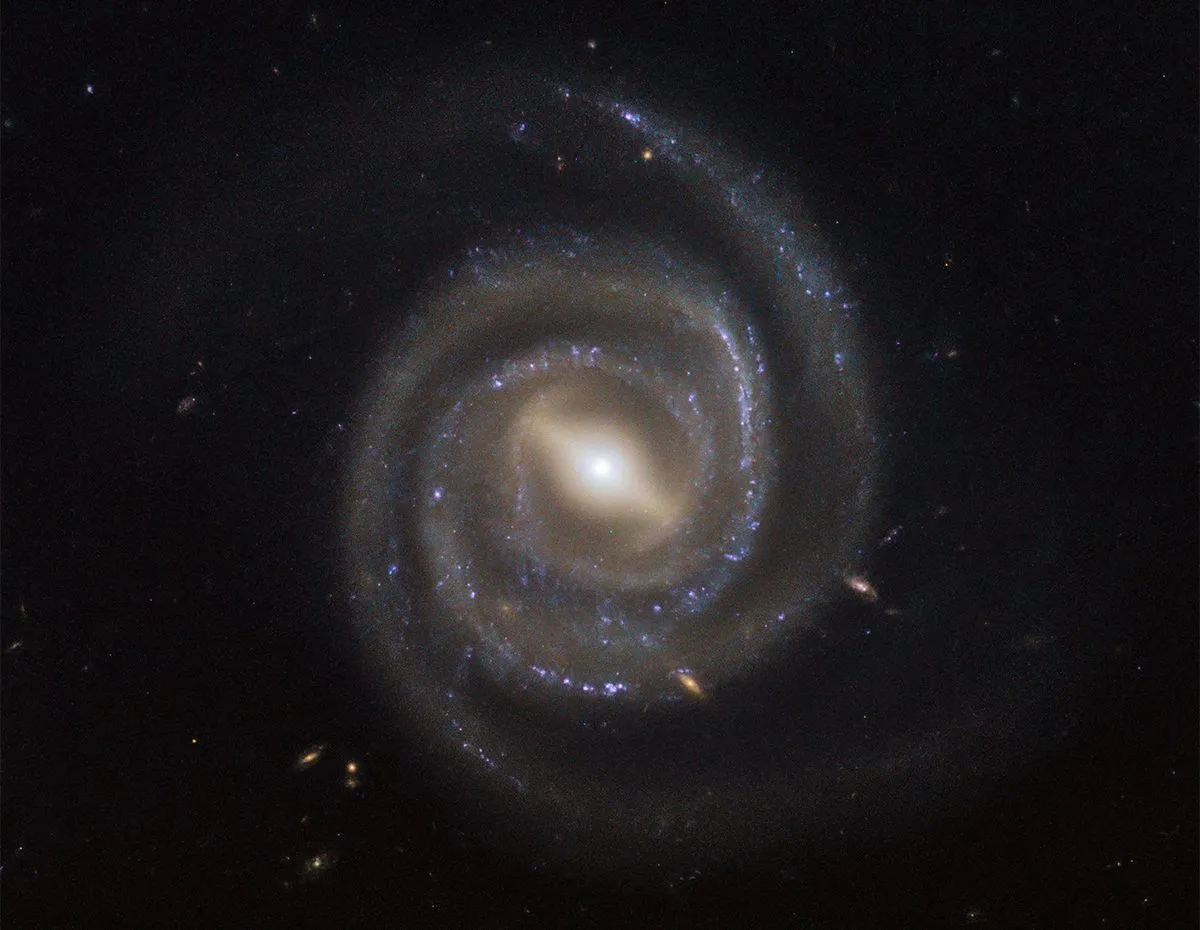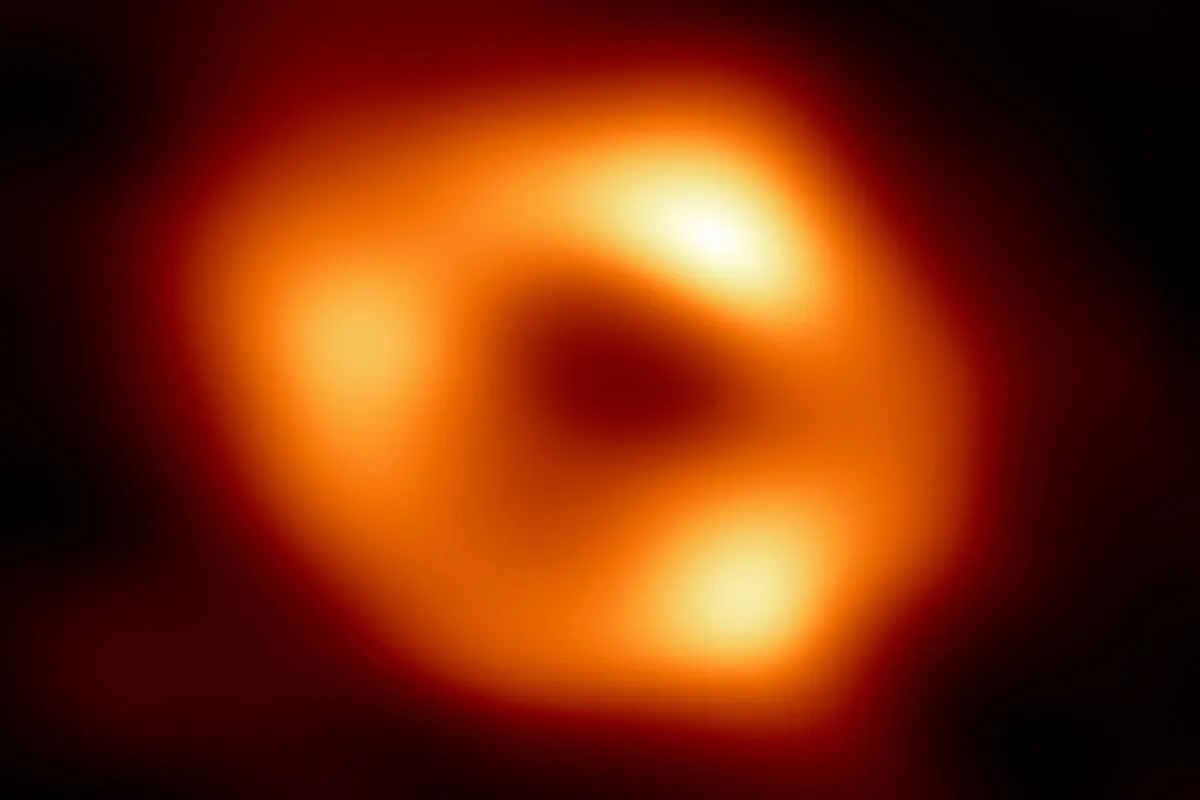Intermediate-mass black holes could be a key piece in the puzzle of black hole evolution.
Astronomers now know that so-called supermassive black holes reside at the centres of galaxies, and at the other end of the spectrum, much smaller 'stellar black holes' are also well-known.
But not so intermediate-mass black holes. These remain something of an anomaly, as very few have ever been confirmed.
In early observations of our galactic centre, astronomers found what they thought were stars around Sagittarius A*, the supermassive black hole at the Milky Way’s heart.
One of these stars was IRS 13.

As observations improved, IRS 13 was found not to be a single star, but instead a group of several sources, which were later found to be clusters of stars.
Now, astronomers have found that there are at least 70 objects in IRS 13. In fact, IRS 13 contains the highest density of stars of any region in the Milky Way.
And this dense cluster of strangely young stars at the centre of our Galaxy may prove that a rare middling-sized black hole is sitting nearby.
We spoke to Florian Peissker, a researcher at the University of Cologne, Germany, to find out more.

How did you discover IRS 13 was hiding a black hole?
IRS 13 used to be treated as a tight group of bright objects.
We found that it also contains a long, elongated, evaporating tail which moves together with the densely packed group of bright objects.
That implies the existence of an object at the centre of IRS 13 that holds the whole structure together.
By looking at evidence from different observations, we can infer that this object is an intermediate-mass black hole.
What is an intermediate-mass black hole?
Around 50 years ago, astronomers proposed every traditional galaxy hosts a supermassive black hole
at its centre.
These black holes are extremely large and heavy, over 100,000 times the mass of our Sun.
There are also stellar black holes, which are not as heavy, with masses up to 10 or maybe hundreds of times the Sun’s mass.
But there is a big gap in the middle, and this is where we expect to find intermediate-mass black holes.
As of 2024, there are only 10 confirmed intermediate-mass black holes in our entire Universe, which is an amazingly low number.

Why are they so hard to detect?
If we look at the Milky Way to determine the presence of an intermediate-mass black hole, we can investigate single stars and their motion.
Where there’s a black hole, stellar orbits will be curved by the presence of an unseen object and you can calculate the mass of the unseen object based on the orbit of these stars.
That’s what we did for IRS 13.
We gathered all the available data at all available wavelengths, from X-ray observations right the way across the electromagnetic spectrum.
When we compared this data to theoretical predictions, we found they matched very well.
How did you discover IRS 13 had an intermediate-mass black hole?
We showed that IRS 13 is an evaporating cluster, which is itself an important discovery.
The Nobel Prize winner Andrea Ghez once proposed the ‘paradox of youth’, an amazing finding which showed that the stars around Sagittarius A* are surprisingly young. Paradoxically so.
But that raises a question of how and where these stars formed.
Most astronomers agree they can’t have formed around Sagittarius A* because of the extreme environment near the black hole.
But if a cluster with some younger stars approaches within 1–2 parsecs of Sagittarius A*, then this cluster might violently interact with another cluster or the material near the black hole.
This violent interaction could cause the cluster to begin spiralling inwards towards Sagittarius A*, constantly interacting with the black hole but in a partially stable state.
In this situation, young stars could start to form.
This is exactly what we found in IRS 13: a cluster core containing evolved stars, but with an elongated tip containing candidates for very young stars.
This is a mechanism that could potentially exist in other galaxies and could tell us about how a supermassive black hole could influence the formation of new stars.

What’s next for your team?
The galactic centre is packed with so much amazing stuff, and there are many interesting objects floating around.
In a few years, we will have access to the Extremely Large Telescope, which will give us the chance to observe the galactic centre in a previously impossible way.
From all this data, I hope to draw lines of connection using the evidence we already have.
For example, we could start to explain how supermassive black holes get so large so quickly – something we don’t yet know.
This could arise from intermediate-mass black holes acting as seeds, which might also explain why we don’t detect them as often as we might expect.
This interview appeared in the November 2023 issue of BBC Sky at Night Magazine
